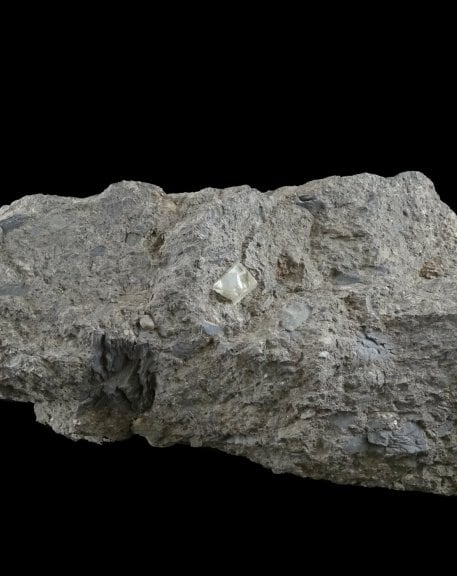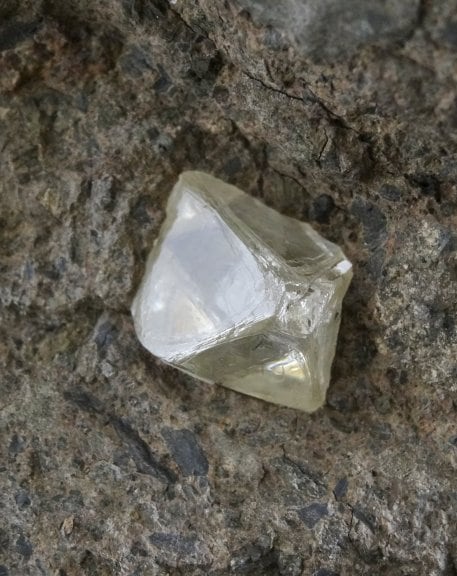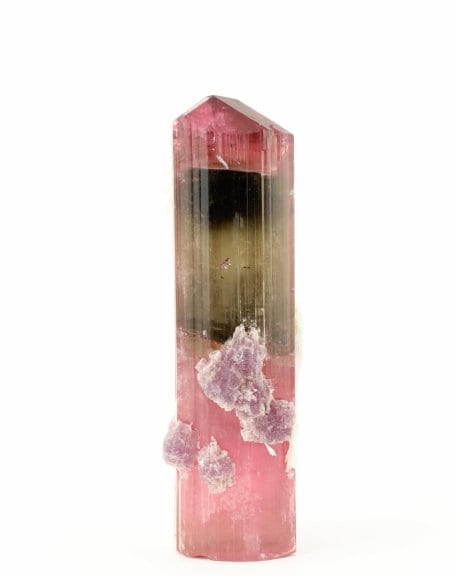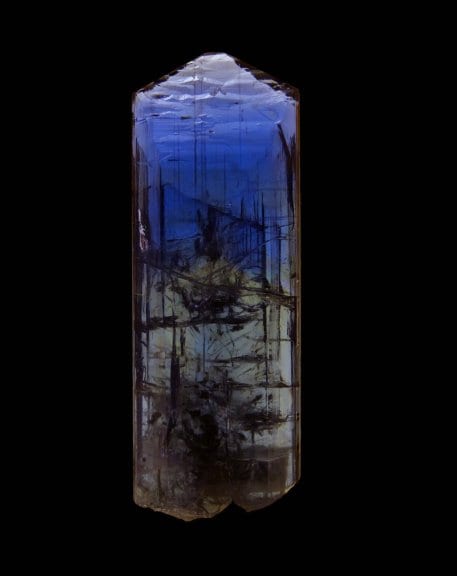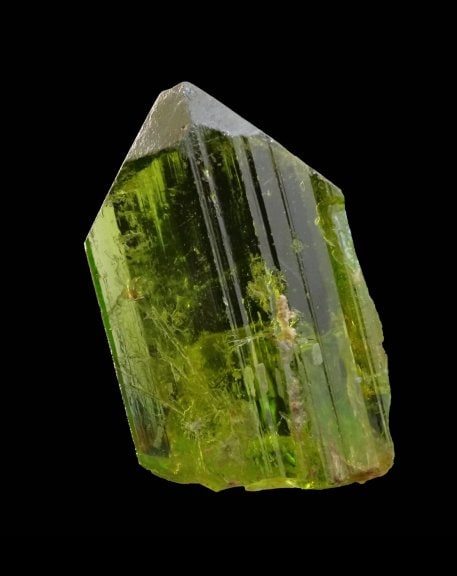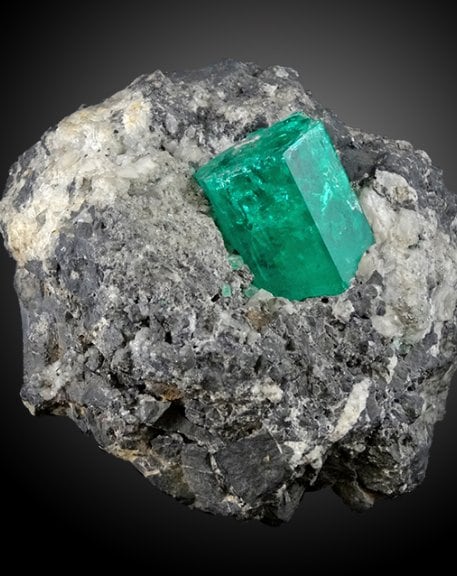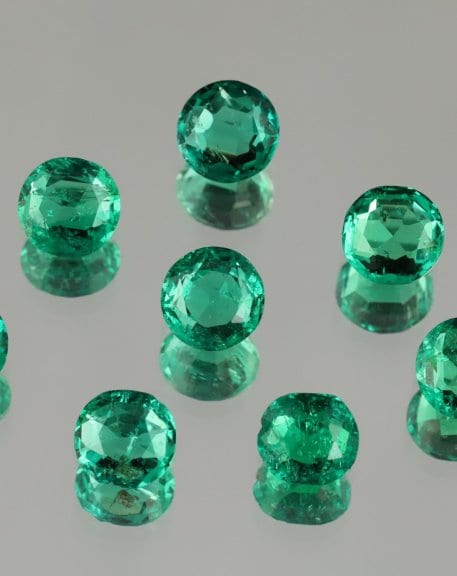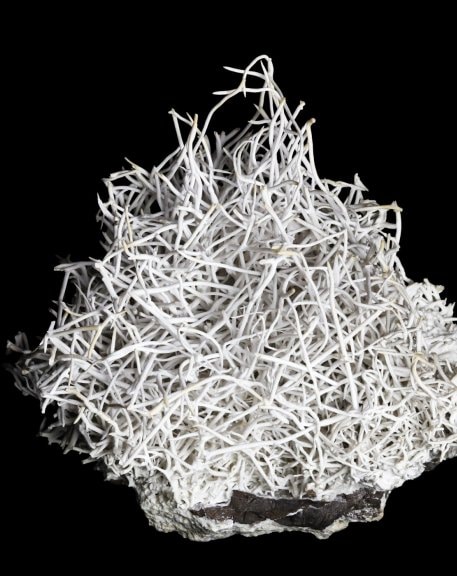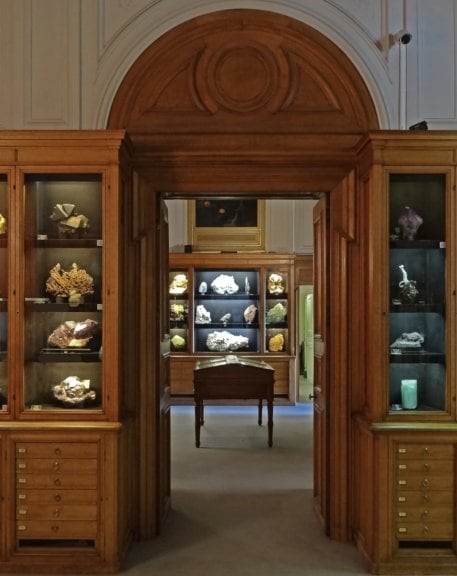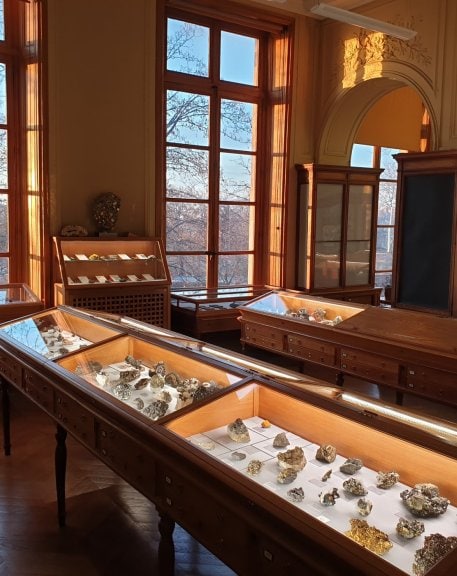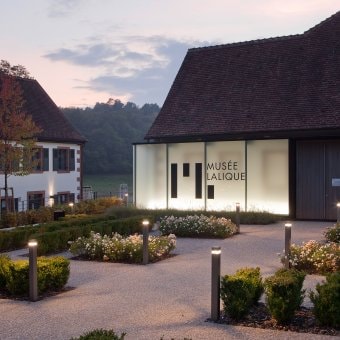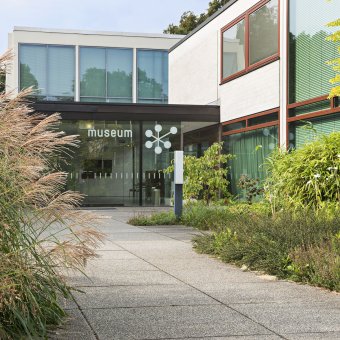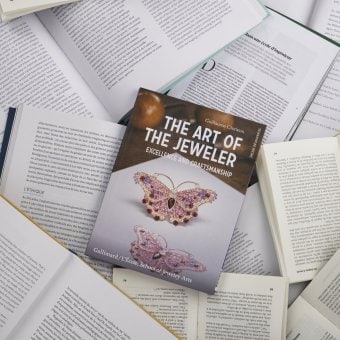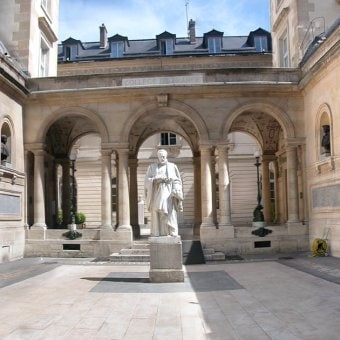Billions of years ago...
Displayed in 19th-century Hungarian oak showcases, the minerals are now mostly classified by chemical family. Let their beauty, their formulas, their colors and their origins transport you to different realms: South Africa and Brazil for diamonds. Zambia and Colombia for emeralds, or Sri Lanka and France for sapphire. The museum allows us to go further and understand how they were formed. "A mineralogist never looks for copper, gold, emeralds or diamonds (which are too small), but for the rock that contains them," explains Museum Director Éloïse Gaillou. We thus discover a ruby from Vietnam crystallized in white marble, a sapphire in metamorphic rock and a diamond from the Premier Mine (South Africa) in kimberlite, along with the rock that transported it to the surface of the Earth. The sample that testifies to this today, still trapped in its gangue, is extremely rare.
Why one stone and not another?
All the minerals on display are first and foremost considered scientific subjects. Of the 100,000 in the collection, few are actually destined for the jewelry industry. "The mineralogist's view is not the same as that of the gemologist, who selects stones for the jeweler. For the former, the crystal must first be well formed. For the latter, the crystal must be of gem quality - in other words, of incredible color and transparency, which is actually quite rare. Hardness is also essential to enable the lapidary to transform a stone into jewelry", explains Éloïse Gaillou. The spectacular aragonite with its white tentacles and Brazilianite, which breaks into a thousand pieces at the slightest touch of the lapidary, will never end up in a jeweler's shop. Nor will the metallic beauty of pyrite, which degrades easily, and gives off a whiff of sulfuric acid to boot.
How do you make a gem out of a rough cut?
Rough tourmaline, peridot, tanzanite and amethyst crystals are rarely mounted in jewelry; designer Jean Vendome was one of the few to do so in the 1950s and 60s. All the jeweler's skill, virtuosity and intelligence are called into play: the stones must then be polished, cut and faceted by a lapidary with the aim of achieving the perfect color and brilliance – witness some of the amethysts and emeralds that adorned the Crown Jewels. This marvelous Mineralogy Museum, virtually unchanged since the 19th century, tells the story of how humanity regained mastery over Nature.
Visit the Museum's collection at L'ÉCOLE Asia Pacific
Exhibition "Journey with Minerals" in Hong Kong
presented by
L'ÉCOLE Asia Pacific, School of Jewelry Arts
Supported by Van Cleef & Arpels
20.07.2024 - 31.10.2024
510A, 5F, K11 MUSEA, 18 Salisbury Road, Tsim Sha Tsui, Hong Kong
Free Admission, 1pm - 7pm daily
Read more about the Museum on the French Jewelry Post: "10 Must-see Stones at the Mineralogy Museum of Mines Paris - PSL"

